In this comprehensive guide, we delve into the intricate processes of Sheet Metal Bending, the vital role of Press Brakes, and the transformative impact they have in industries ranging from automotive to aerospace. Understanding these techniques and equipment is essential for anyone looking to master the art of metal fabrication or to appreciate the engineering behind everyday products. Join us as we unfold the secrets of metal bending, offering insights and expertise in this fascinating field.
- Definition of Sheet Metal Bending
- Importance of Sheet Metal Bending in Manufacturing and Construction
- Types of Sheet Metal
- Fundamental Principles of Metal Bending
- Sheet Metal Bending Techniques
- Bending Equipment and Machinery
- Bending Process Parameters
- Material Preparation for Bending
- Tooling for Sheet Metal Bending
- Quality Control in Metal Bending
- Safety Considerations in Metal Bending
- Environmental Aspects of Metal Bending
- Cost Analysis and Efficiency
- Case Studies and Real-World Applications
Definition of Sheet Metal Bending
Sheet metal bending is a pivotal process in the realm of metal fabrication, transforming flat sheets into angular, complex structures through precise deformation. It's fascinating how a simple concept, bending, can be so integral in shaping components for myriad industries, from automotive to aerospace.
At its core, sheet metal bending involves applying force to a metal sheet, causing it to bend at an angle and form a desired shape. This process requires specific sheet metal bending machines or press brakes, which exert pressure on the metal, ensuring accuracy and consistency. The bend's angle is determined by various factors, including the type of metal, its thickness, and the desired bend radius.
The beauty of this process lies in its versatility. From creating intricate designs for electronics to robust parts for heavy machinery, the application of sheet metal bending is broad and diverse. It’s a technique that balances strength and precision, ensuring that each bend maintains the metal’s integrity while achieving the required shape.
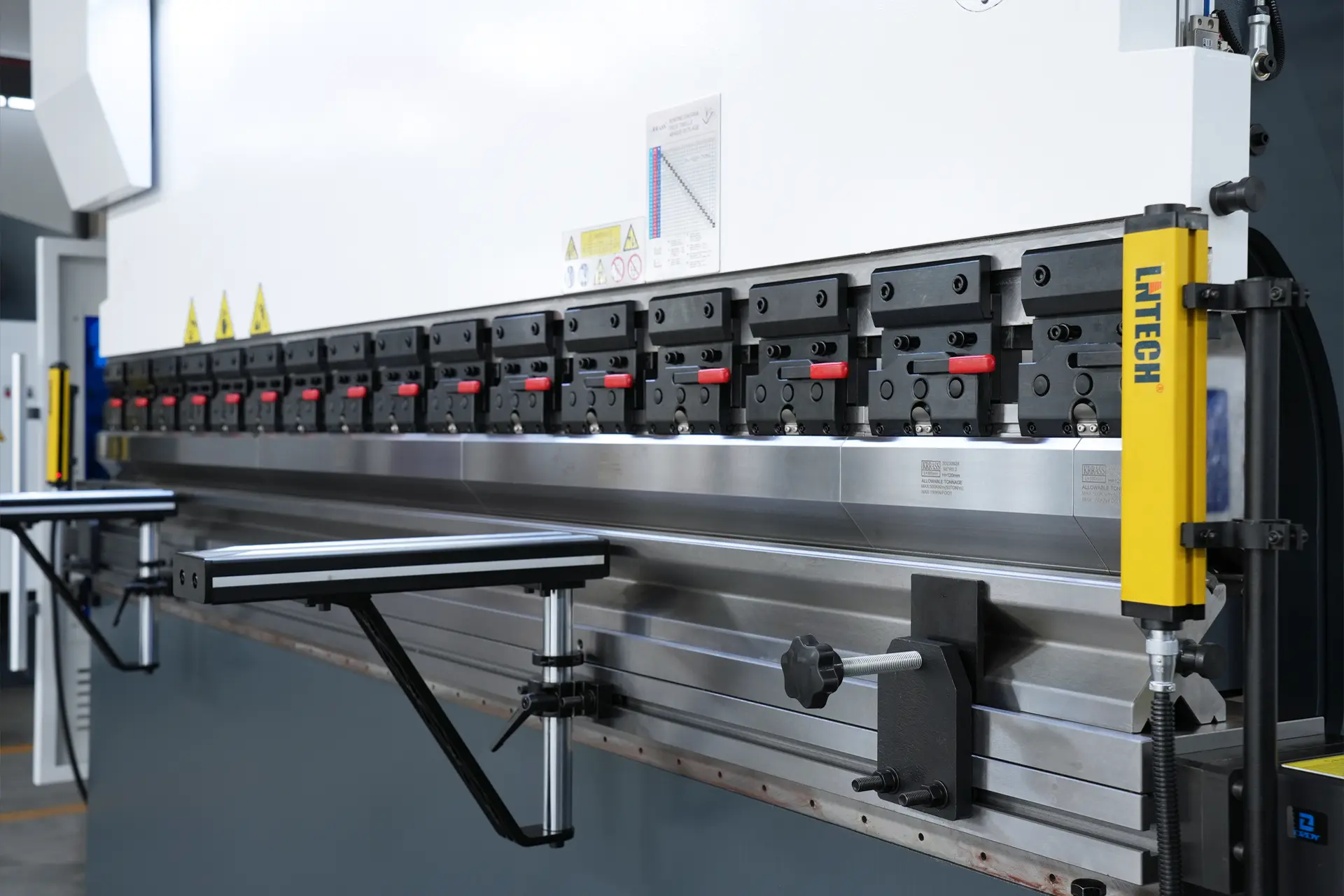
Importance of Sheet Metal Bending in Manufacturing and Construction
Sheet metal bending is not just a process; it's the backbone of modern manufacturing and construction. This technique's significance lies in its ability to create bespoke, precise shapes crucial for various applications. Whether it's the construction of a high-rise building or the intricate assembly of automotive parts, sheet metal bending plays a vital role.
In manufacturing, the precision and versatility of sheet metal bending allow for the creation of components that meet exact specifications. This adaptability is key in industries like automotive, where tailored parts are essential for both functionality and design. The use of advanced bending machines ensures consistency and efficiency, enabling manufacturers to produce high-quality products in a cost-effective manner.
In the realm of construction, sheet metal is pivotal for structural integrity and design flexibility. The ability to bend metal sheets into specific angles and shapes means architects and engineers can push the boundaries of traditional design, creating structures that are both aesthetically pleasing and structurally sound. From roofing elements to decorative features, the applications are as limitless as the imagination of the designers.
Moreover, the advancement in sheet metal bending technology, including the use of Press Brakes, has revolutionized how we approach these industries. It allows for more intricate designs and tighter tolerances, which are essential in sectors demanding high precision, like aerospace and specialized equipment manufacturing.
Types of Sheet Metal
A. Commonly Used Metals and Alloys
The world of sheet metal bending is diverse, with a variety of metals and alloys finding their place in different applications. Commonly used metals include aluminum, stainless steel, copper, brass, and mild steel, each bringing its unique properties to the table. Aluminum is prized for its lightweight and corrosion resistance, making it ideal for automotive and aerospace industries. Stainless steel, known for its strength and corrosion resistance, is a go-to in construction and medical equipment. Copper and brass, with their excellent conductivity and malleability, are favored in electrical components and decorative elements.
B. Characteristics and Suitability for Bending
Each type of metal has specific characteristics that affect its suitability for bending. Factors such as ductility, tensile strength, and thickness play a significant role in determining how well a metal can be bent without cracking or distorting. For instance, aluminum and copper are more malleable and easier to bend compared to stainless steel, which requires more force due to its high tensile strength. Understanding these properties is crucial when working with bending machines and Press Brakes, as it ensures the right approach for each material.
C. Selecting the Right Metal for Your Project
Selecting the right metal for a project is a critical decision that impacts the project's success. It involves considering the end use of the product, environmental factors, and the desired aesthetic. For outdoor applications, metals with higher corrosion resistance like stainless steel or coated metals are preferred. For intricate designs requiring extensive bending, softer metals like aluminum might be the better choice. Ultimately, balancing the material's properties with the project's requirements is key to selecting the perfect metal for your needs.
Fundamental Principles of Metal Bending
A. Understanding Elastic and Plastic Deformation
In the realm of sheet metal bending, understanding the concepts of elastic and plastic deformation is crucial. When a metal is bent, it initially undergoes elastic deformation, where it will return to its original shape once the force is removed. Beyond a certain point, known as the yield point, the metal enters plastic deformation, where the changes become permanent. The key in sheet metal bending is to achieve the desired shape in the plastic region without causing cracks or fractures, a balance that demands precision and expertise.
B. The Science Behind Metal Memory and Springback
Metal memory and springback are phenomena closely tied to the elastic properties of metals. After bending, metals tend to 'spring back' slightly towards their original shape due to their inherent elasticity. This springback must be accounted for in the bending process, especially when working with high-strength materials or complex bends. The science behind this involves understanding the material's modulus of elasticity and strategically overbending to achieve the desired final angle post-springback.
C. Factors Affecting Bending Quality
Several factors influence the quality of bends in sheet metal. The type of metal, its thickness, and grain direction are primary considerations. The capabilities and settings of the bending machine also play a critical role - factors like bend radius, bend angle, and the force applied. Additionally, environmental factors such as temperature can affect the metal's properties during bending. Understanding and controlling these factors are essential for achieving high-quality, precise bends in any sheet metal fabrication project.
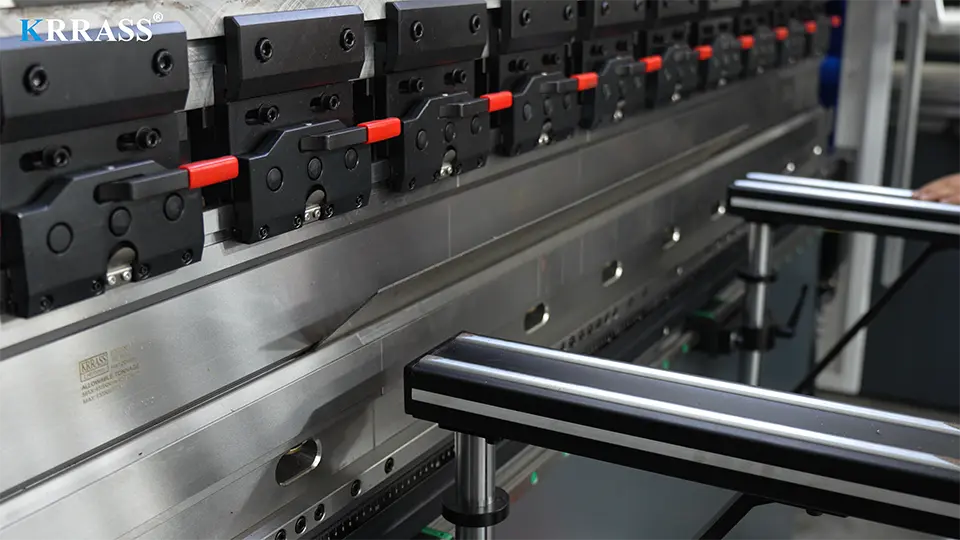
Sheet Metal Bending Techniques
A. Air Bending
Air bending, a popular technique in sheet metal fabrication, involves placing the sheet metal on a die and lowering a punch to form the bend. This method doesn't require the punch and die to touch the metal entirely, allowing for more flexibility in bend angles. Air bending is known for its efficiency and versatility, making it suitable for various applications where precision and minimal setup changes are essential.
B. Bottoming and Coining
Bottoming and coining are more precise bending techniques. In bottoming, the sheet metal is pressed against the die until it conforms to its shape, resulting in more accurate bends. Coining involves applying enough pressure to imprint the die's shape into the metal, ensuring even more precision. These methods are ideal for projects requiring tight tolerances but require greater force and more specialized tooling.
C. Folding and Forming
Folding and forming involve clamping the sheet metal and then bending it over a straight edge to achieve the desired angle. This method offers excellent control over the bend and is especially useful for complex shapes and large sheet metals. It's a go-to technique for architectural metalwork and large-scale construction projects.
D. Rotary Bending
Rotary bending is a modern technique where the sheet metal is bent using a rotating movement. This method is less likely to mar the material's surface, making it ideal for pre-painted or sensitive materials. It's particularly useful in applications where aesthetics are as important as functionality.
E. Comparison of Techniques and Applications
Each bending technique has its own set of advantages and ideal applications. Air bending is versatile and efficient, suitable for a wide range of industries. Bottoming and coining, while requiring more force, offer higher precision, crucial in aerospace and automotive industries. Folding and forming are excellent for large-scale projects, offering control and flexibility. Rotary bending, with its aesthetic finesse, is perfect for visible parts in consumer products. Understanding these techniques' nuances helps in selecting the most appropriate method for a given sheet metal project.
Bending Equipment and Machinery
A. Manual versus Automated Bending Tools
The choice between manual and automated bending tools often hinges on the scale of production and precision required. Manual tools, like hand brakes and sheet metal folders, are perfect for small-scale, custom jobs. They offer flexibility and lower costs but require more skill and labor. Automated tools, including CNC press brakes, are the cornerstone of large-scale production, offering unparalleled precision, consistency, and efficiency, albeit at a higher cost and with more complex setup requirements.
B. Press Brakes: Types and Features
Press brakes are a staple in sheet metal bending, with various types available. Mechanical press brakes, while being an older technology, are known for their power and speed. Hydraulic press brakes offer versatility and precision, suitable for a wide range of bending tasks. The more recent electric press brakes boast high efficiency, precision, and lower operational costs. Each type comes with unique features like varying tonnage, bend length capacities, and control systems, catering to different bending needs.
C. Other Essential Bending Machines
Besides press brakes, there are other essential machines in sheet metal bending, such as panel benders, which are ideal for large panels and high-volume work. Roll benders, used for creating curved metal sheets, are indispensable in many construction and manufacturing processes. Turret punch presses, combining cutting and forming operations, are also crucial for their versatility in creating intricate parts.
D. Innovations in Bending Equipment
Innovation in bending equipment is constantly evolving to meet the demands of modern manufacturing. Advancements include the integration of AI and machine learning for enhanced precision and efficiency. Automation in loading and unloading processes, as well as the use of robotics, are increasingly common in high-volume production settings. These innovations not only improve bending quality but also significantly reduce manual labor and increase safety in operations.
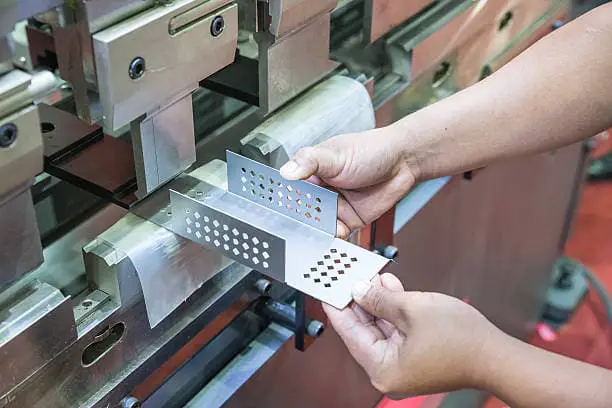
Bending Process Parameters
A. Setting the Bend Angle and Radius
Setting the correct bend angle and radius is crucial in sheet metal bending. The bend angle is typically programmed into the bending machine, like a CNC press brake, ensuring precision in each bend. The bend radius, on the other hand, depends on the material and thickness of the sheet metal. A smaller radius can make the metal more prone to cracking, while a larger radius might not achieve the desired shape. It's a delicate balance that requires an understanding of material properties and the capabilities of the bending equipment.
B. Determining Minimum Bend Dimensions
Determining the minimum bend dimensions is essential to avoid material failure. This involves understanding the minimum bend radius, which is the smallest radius you can bend a sheet without cracking it. It varies with each type of metal and its thickness. The rule of thumb is that the minimum bend radius should be at least equal to the thickness of the sheet metal. However, this can vary based on the material's ductility and the bending process used.
C. Calculating Force and Pressure Requirements
Calculating the correct force and pressure is vital for a successful bend. This depends on the material's tensile strength, the thickness of the metal, and the desired bend radius. The formula for calculating bending force can be complex, involving the material's yield strength, the length of the bend, and the V-die opening. Understanding these calculations is key for operators to set up the press brake or other bending machinery correctly, ensuring the bending process is both efficient and safe.
Material Preparation for Bending
A. Cleaning and Surface Treatment
Proper cleaning and surface treatment of sheet metal are essential steps before bending. Removing dirt, grease, and other contaminants ensures better adherence to precise bending angles and minimizes the risk of defects. Surface treatments such as priming or coating can also enhance the metal's resistance to corrosion and wear, especially important for materials exposed to harsh environments post-fabrication.
B. Cutting and Sizing Techniques
Accurate cutting and sizing of the sheet metal are crucial for the bending process. Techniques like shearing, laser cutting, or waterjet cutting are used based on the metal type and thickness. Precise sizing ensures that the final bent product meets the exact specifications and fits seamlessly into the intended application. This step requires careful planning and execution, often using Press Brakes or other specialized equipment.
C. Pre-Bending Treatments to Improve Flexibility
Pre-bending treatments, such as annealing or heat treating, can significantly improve the flexibility and workability of certain metals. These processes involve heating the metal to a specific temperature and then cooling it under controlled conditions. This alters the metal's microstructure, reducing hardness and increasing ductility, making it more amenable to bending without cracking or breaking. Such treatments are particularly important for metals that are naturally hard or brittle.
Tooling for Sheet Metal Bending
A. Types of Dies and Punches
In sheet metal bending, dies and punches are fundamental tools. The selection of these tools varies based on the desired bend radius, angle, and the type of metal being bent. Common die types include V-dies, U-dies, and rotary bending dies, each offering different bend angles and radii. Punches, which apply the force, also come in various shapes and sizes, like acute angle punches, gooseneck punches, and hemming punches. The right combination of die and punch is crucial for achieving precise and efficient bending operations.
B. Custom Tooling Solutions
For unique or complex bending requirements, custom tooling solutions are often necessary. These are specially designed dies and punches that cater to specific bending shapes, sizes, and materials. Custom tooling is particularly useful for unique product designs or when working with non-standard sheet metal sizes. While more costly, they ensure that the bending process meets the exact specifications of the project, enhancing both efficiency and quality.
C. Maintenance and Care of Bending Tools
Regular maintenance and care of bending tools are essential for ensuring their longevity and performance. This includes routine cleaning, lubrication, and inspection for wear and damage. Proper storage of dies and punches is also crucial to prevent rust and corrosion. Timely maintenance not only extends the life of these tools but also ensures consistent bending quality, reducing the risk of tool-related defects in the final product.
Quality Control in Metal Bending
A. Accuracy and Precision Requirements
In metal bending, adhering to high standards of accuracy and precision is non-negotiable. This ensures that the bent products conform precisely to the specified dimensions and tolerances, which is essential for the functionality and assembly of the final products. Accuracy in bending prevents material wastage and reduces the need for rework, thus maintaining efficiency and cost-effectiveness in production.
B. Measuring and Inspecting Bends
Measuring and inspecting bends are critical for quality control. This involves using precision tools like protractors, angle finders, and CMMs (Coordinate Measuring Machines). Regular inspection helps in detecting any deviations from the desired specifications early in the production process. It's crucial to measure both the angle and the radius of the bends, ensuring that they meet the design requirements and maintain the structural integrity of the metal.
C. Common Defects and Troubleshooting
Common defects in metal bending include springback, cracking, and wrinkling. Springback occurs when the metal tries to return to its original shape, affecting the accuracy of the bend. Cracking often happens when the bend radius is too tight for the material, while wrinkling may occur if the metal is compressed too much. Troubleshooting these issues involves adjusting the bending process parameters, such as changing the bend radius, modifying the pressure applied, or using different tooling. Understanding the material properties and the mechanics of bending is key to effectively addressing these challenges.
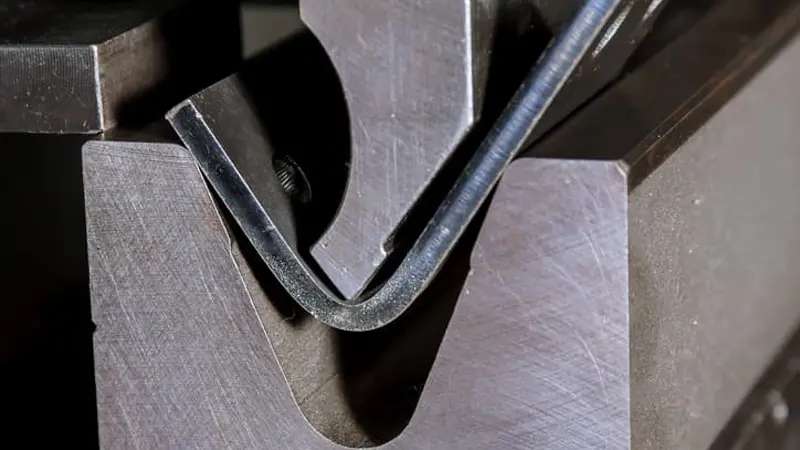
Safety Considerations in Metal Bending
A. Personal Protective Equipment
Safety in metal bending starts with the right personal protective equipment (PPE). Operators should wear protective gloves to prevent cuts and burns, safety glasses to shield against metal particles and debris, and ear protection in high-noise environments. Depending on the specific tasks and machines used, additional PPE like face shields, steel-toed boots, or protective clothing may also be necessary. Ensuring that PPE is properly used and maintained is a fundamental aspect of workplace safety.
B. Safe Operating Procedures
Adhering to safe operating procedures is crucial for preventing accidents and injuries. This includes following the manufacturer’s guidelines for operating bending machinery, like press brakes and Press Brakes. Operators should be trained to understand the machinery's functioning, including safe start-up, operation, and shutdown procedures. Regular inspections and maintenance of the equipment are also vital to ensure they are in good working condition and safe to use.
C. Emergency Protocols and Training
Establishing clear emergency protocols and providing comprehensive training are key elements of safety in metal bending operations. Workers should be trained in emergency response procedures, including how to safely shut down equipment and administer first aid. Regular drills and training sessions can help reinforce these protocols and ensure that everyone knows how to respond in case of an emergency. It's also important to have easily accessible emergency stop buttons and first-aid kits in the work area.
Environmental Aspects of Metal Bending
A. Energy Efficiency and Consumption
Energy efficiency is a significant concern in metal bending operations. Modern bending machinery, including electric press brakes and automated systems, are designed to consume less energy compared to traditional equipment. Manufacturers are increasingly focusing on reducing the carbon footprint by optimizing machine operation cycles and incorporating energy-saving features. This not only helps in conserving energy but also in reducing operational costs.
B. Waste Management and Recycling
Effective waste management and recycling are crucial in metal bending processes. Scraps and offcuts generated during bending and cutting should be systematically collected for recycling. Many facilities have implemented procedures to segregate and recycle metal waste, significantly reducing the environmental impact. Recycling not only conserves resources but also reduces the need for raw material extraction, contributing to a more sustainable manufacturing cycle.
C. Sustainable Practices in Metal Bending
Sustainable practices in metal bending involve more than just recycling. It includes using environmentally friendly lubricants and coolants, implementing energy-efficient lighting and ventilation in facilities, and adopting lean manufacturing principles to minimize waste. Training employees on sustainability practices and continuously exploring innovations in technology and processes also play a vital role in making metal bending a more eco-friendly industry.
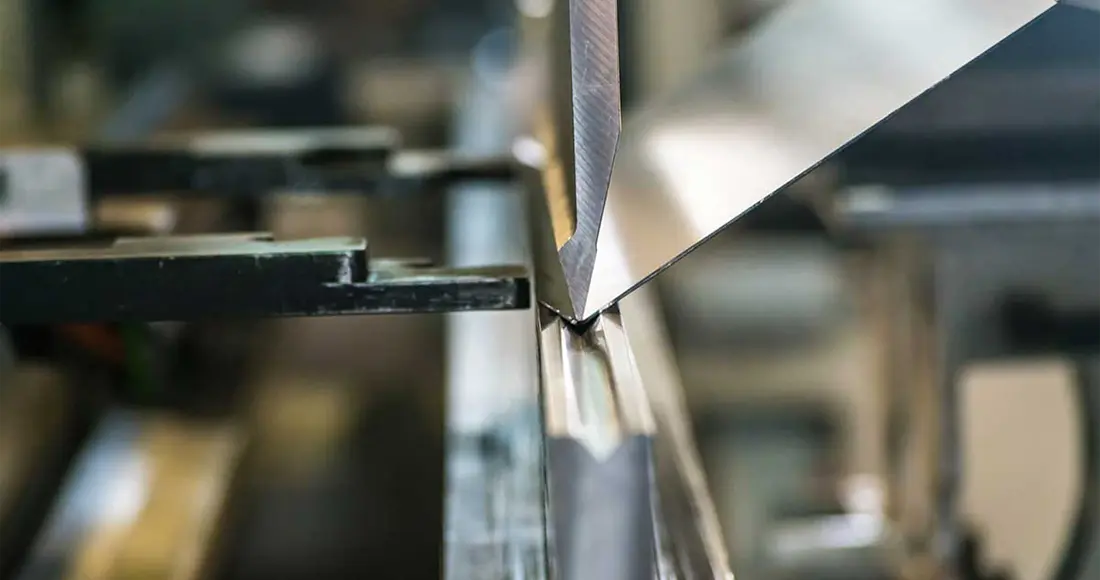
Cost Analysis and Efficiency in Metal Bending
A. Estimating Bending Project Costs
Estimating costs accurately is vital for the profitability and viability of any metal bending project. Factors such as material costs, machine operation and maintenance, labor, and overheads play a crucial role in cost estimation. The complexity of the bending operations, including the type of bends and the precision required, can also significantly impact the overall cost. Accurate estimation requires a comprehensive understanding of these factors and the project's specific requirements.
B. Factors Influencing Cost Efficiency
Several factors influence the cost efficiency of metal bending operations. These include the choice of machinery – for instance, automated machines like CNC press brakes may have higher upfront costs but can lead to long-term savings through higher precision and reduced waste. Material utilization and waste reduction are other crucial factors, as is the efficiency of the bending process itself, which can minimize the time and resources required for each project.
C. Strategies for Reducing Operational Costs
Reducing operational costs in metal bending involves several strategies. Optimizing material usage and minimizing waste through precise cutting and bending techniques is essential. Investing in energy-efficient machinery can lead to substantial cost savings over time. Regular maintenance of equipment can prevent costly repairs and downtime. Additionally, training employees to operate machinery efficiently and safely can reduce errors and accidents, further cutting down operational costs.
Case Studies and Real-World Applications of Sheet Metal Bending
A. Sheet Metal Bending in the Automotive Industry
The automotive industry heavily relies on sheet metal bending for manufacturing various components, from body panels to chassis. Precision and consistency are paramount, as the slightest deviation can affect the vehicle's assembly and performance. Advanced bending techniques, like CNC bending and robotic automation, have enabled manufacturers to produce parts with high accuracy, meeting the stringent standards of the automotive industry. This has not only improved the quality of vehicles but also streamlined production processes, reducing costs and increasing efficiency.
B. Applications in Aerospace and Aviation
In aerospace and aviation, sheet metal bending is used to create structural components, engine parts, and even intricate elements of the aircraft interior. The demands for precision and strength are even higher in this sector due to the safety-critical nature of the products. Materials like titanium and high-strength alloys are commonly used, requiring specialized bending techniques and machinery. The precision of these components directly impacts the performance, safety, and longevity of aircraft.
C. Innovative Uses in Architecture and Design
Sheet metal bending has also found innovative applications in architecture and design. It allows architects and designers to create unique, aesthetically pleasing structures and elements that stand out. From curved metal facades to intricate decorative pieces, bending techniques have expanded the possibilities in architectural design. These applications often require a combination of technical precision and creative vision, showcasing the versatility and adaptability of sheet metal bending in pushing the boundaries of design.
Discover the Future of Metal Bending with Krrass
As we conclude our journey through the dynamic world of Sheet Metal Bending, it's clear that precision, efficiency, and innovation drive this industry forward. Leading the charge in this field is Krrass, China's premier manufacturer of Bending Machines. At Krrass, we're committed to providing top-tier metal bending solutions that cater to the evolving needs of global industries. Our state-of-the-art machinery embodies the pinnacle of technology and craftsmanship. Explore our extensive range of products and discover how Krrass is shaping the future of metal fabrication. Visit us at www.krrass.com to learn more about our innovative solutions and how they can revolutionize your manufacturing process.
Read More:
Top 10 Best Press Brake Manufacturer: Buying Guide How to Configure and Use CNC Guillotine Press Brake Press Brake vs Press Brake: What Are the Differences




